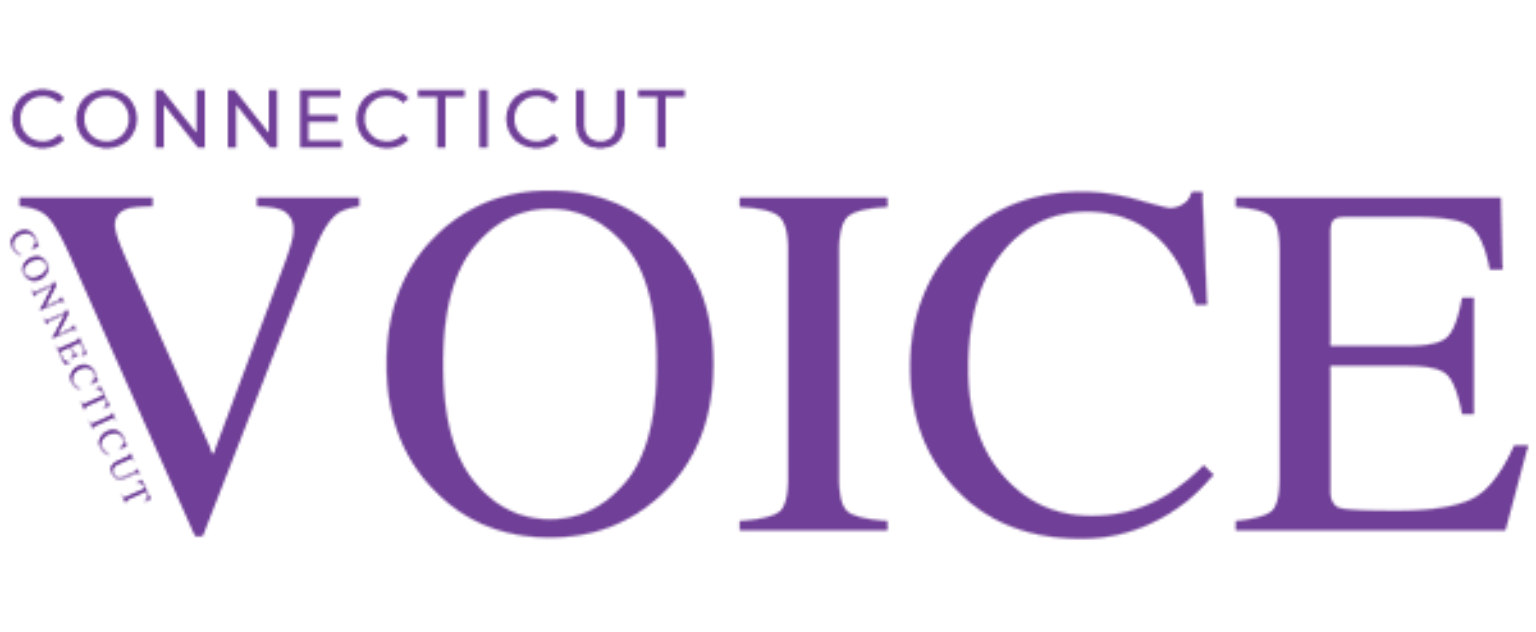For the first time, someone has asked Connecticut’s LGBTQ+ residents about themselves. Who are you? How are you doing? What do you need?
The responses include a few surprises, but primarily confirm what providers and community members already know. The real news, though, is that having this data will enable providers to better tailor services to needs, and—this is huge—more easily obtain funding.
“More valuable than gold” is how the chair of the group behind the survey put it.
To many respondents, it was powerful and reinforcing just to be acknowledged. “I can’t tell you what it means to be asked these questions,” is a typical comment.
The first Connecticut LGBTQ+ Health and Human Services Survey, which sought responses earlier this year from those 18 and up, is the first comprehensive, statewide collection of data on the community’s identities and needs. Collected data includes age, race, language, homelessness, disability, income and more, but this is also the first time that gender identity and sexual orientation data have been captured statewide.
The survey is the first project of the Connecticut LGBTQ+ Health and Human Services Network, created by statute to serve as an advisory board to the legislature. It operates from within the Commission on Women, Children, Seniors, Equity and Opportunity. Commission Executive Director Steven Hernández says he hopes the Network will also become “a touchstone for the community.”
The Network consists of representatives from many non-profit health and human services agencies, plus state agencies. Most representatives are LGBTQ+ community members.
The Network’s purpose is to make the state a safer and healthier environment for the queer community. The survey is meant to provide greater understanding of the community, what services it needs, and how it obtains them. It was conducted by the Consultation Center at Yale. “It’s one of the most rewarding things I’ve ever worked on,” says Amy Griffin, director of health evaluation initiatives for the center.
“The next step is to use that data to figure out how the Network can provide the community what it needs,” says Network Chair Patrick Dunn, executive director of the New Haven Pride Center. That will include using the data to develop a grant process, and the legislature funded the Network with $500,000 over two years. Grants will go to LGBTQ+-specific programs and services that focus on what Dunn calls “closing the gap for queer Nutmeggers.”
“This survey is more valuable than gold,” Dunn says, because it will prove to out-of-state funders that needs really do exist in Connecticut. “I’ve been told, ‘Connecticut doesn’t need our help, because you’re a blue state and have all these protective laws.’”
However, Dunn and other service providers know from experience what the survey proves: Discrimination, violence, homelessness, food insecurity, lack of affirming health care and other problems exist in the state’s LGBTQ+ population at higher rates than for straight, cisgender residents.
WHO IS IN CONNECTICUT’S LGBTQ+ COMMUNITY?
Asked their sexual orientation, respondents said they are:
- Bisexual (35%)
- Gay (32%)
- Lesbian (29%)
- Straight (5%)
Asked to name their gender identity from these options, respondents said:
- Cisgender (55%)
- Transgender umbrella (40%)
- Gender Diverse (5%)
Respondents were also asked to provide their own description of their identity, and the dozens of terms they submitted points out that the terminology on most forms doesn’t serve the community, says Griffin.
Respondents reported their race as:
- White/ Caucasian (76%)
- Hispanic/Latinx (28%)
- Black/African American (13%)
- Native Indigenous, Asian, Pacific Islander,
- and/or Multiracial (8%)
HOW ARE THEY DOING?
Generally, respondents say Connecticut is a safe place to live. But 69 percent have experienced discrimination. An astonishing 53 percent have endured physical violence because of their gender identity. And there’s a high rate of homelessness, especially for young adults.
Network members say the survey’s overriding message is the need for education and training across the board. “One of the barriers across every service is concern that service won’t be LGBTQ+ friendly, and that providers won’t be appropriately trained,” says Griffin.
Another key finding is that the 211 system needs improvement. “It shows the need for training. There’s a concern providers are not LGBTQ+ competent. People are misgendered, or deadnamed,” says Edson Rivas, executive director of the Triangle Community Center and a member of the Network committee.
Other key findings are:
- Rural areas lack services and social opportunities. “There are pockets not being served,” says Rivas.
- Accessing mental health care is especially difficult for trans and nonbinary people, and the need is tremendous and growing.
- Safety is an issue, even in “safe” Connecticut.
Says Dunn, “Two things jumped out at me as unexpected: individuals who ID as nonbinary experience physical violence at a much higher rate than people who identify as trans. And bisexual individuals ranked as the highest sexual orientation group experiencing physical violence. It reminds all of us that biphobia is extremely prevalent, even internally in the community.”
The survey asked community members for their experiences in the following areas.
Safety:
- 53% experienced physical violence based on their gender identity.
- 30% experienced intimate partner violence.
- 34% experienced sexual violence.
- Survivors of intimate partner violence are most likely to be bisexual (42%).
- Those with intersectional identities are more likely to feel unsafe where they live.
Social Support:
- 96% consider themselves fully out.
- Respondents are least likely to feel supported by neighbors (23%) and religious communities (17%)
- Many would like more places to socialize in addition to Pride events and bars.
Youth Services:
“Many respondents mentioned that LGBTQ+ youth need more mental health services, shelters for runaway homeless youth, social opportunities (e.g., mentoring), and gender and sexuality educational awareness in schools (K-12). Specifically, respondents highlighted the need for protection of trans youth (particularly in school sports),” according to the report.
Housing:
Young LGBTQ adults are the sole exception to an otherwise steadily declining number of homeless people in the state. (See Hitting Home – Connecticut Voice (ctvoice.com) in the Spring 2020 Voice.) Typically, about a third of the state’s homeless young adults are LGBTQ+, mostly because their families kicked them out and they can’t afford housing.
- A third of respondents say they accessed housing services in the past 3 years.
- The top concern was that services would not be LGBTQ+ friendly.
- Older respondents cite concerns about inclusivity and affordability of senior housing or assisted living facilities.
- Some reported being denied housing and being abused in shelters – especially trans and nonbinary people.
Healthcare:
- 16% reported being refused healthcare services because of their identity.
- 64% have concerns related to accessing healthcare services, primarily: that services would not be LGBTQ+ friendly, that providers would not be trained for the needs of the community, not knowing where to access services, and lack of insurance coverage for gender affirming care.
- Some reported negative experiences related to their race, immigrant status, ability, and weight. Some trans and non-binary people experienced malpractice and abuse.
- There were reports of deadnaming, harassment, misgendering, unrelated questions, and uninformed providers.
Mental health:
- 70% sought some type of mental health service in the last three years.
- 15% were refused mental health, addiction, and/or substance use services because of their LGBTQ+ identity.
- Respondents report having to educate their doctors.
Financial and Legal Services:
- 44% used some type of financial or legal service in the last three years.
- 13% were refused such services because of their LGBTQ+ identity.
NOW WHAT?
The report’s bottom line: more needs to be done to advocate for safety of LGBTQ+ residents, including more expansive protective laws, more gender and sexuality education in schools, and more education in every realm of health and human service provision.
Network members hope the survey will be an eye-opener. Dunn hopes to secure funding to print enough copies to hand to every elected official, from small town to U.S. Senate.
Even within the LGBTQ community, this data will spur change. “This document will go a long way in changing how we deliver our services,” Dunn says of the New Haven Pride Center. “I’m already envisioning how this data will functionally change our programming – in particular addressing bisexual and non-binary services.”









More Stories
How Can They Keep from Singing?
“My anger problems became a success” – Artist Diane DiMassa on the Collection of her Classic Underground Comic
Connecticut Sun: Playing for Good